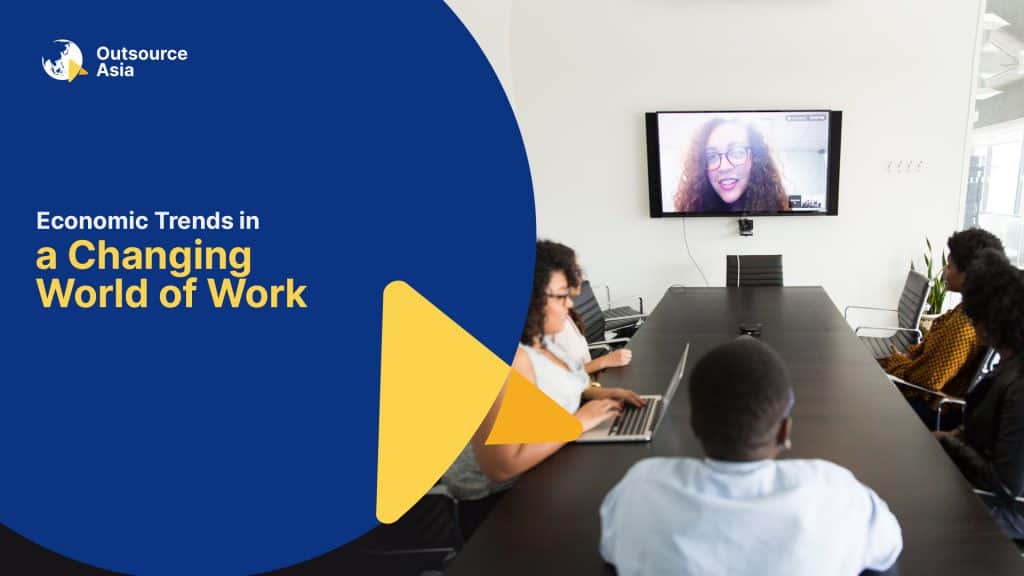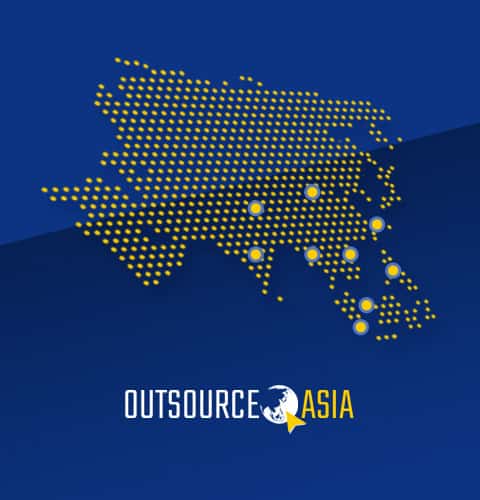
Economic Trends in a Changing World of Work
The post-pandemic world of work is undergoing dramatic changes, with organizations trying to elevate their workforce and foster the business environment with flexibility, innovation, and resilience. While geographical roles, standardized responsibilities, structured environments, and industry-specific particularities might still exist, business leaders are now coming to terms with having to re-examine a more humanistic work model and taking advantage of the invaluable opportunity to ensure there is value creation for all stakeholders.
As experts try to explain the varying components in a changing world, these three basic elements are to be considered: how the work is done, who does the work, and where and when work is done.
How The Work Is Done
This element emphasizes the importance of getting work done productively and creatively through employee collaboration, automation, and artificial intelligence. Rather than competing for jobs or replacing workers with machine, forward-thinking employers must harness the complex but powerful combination of man and technology to boost workforce engagement, business efficiency, and company profits.
Who Does The Work
Traditional full-time staff won’t be obsolete any time soon; instead, there would be a need to work side by side with a remote workforce, gig workers, outsourced service providers, part-time employees, and crowdsourced contributors. The evolving skills requirements, new career paths, and hybrid job descriptions will be addressed through advanced training and reskilling programs, ongoing job analysis, and utilizing outsourced service providers where applicable.
Where And When Work Is Done
The call for increased workplace flexibility has been ongoing for decades, something that has been made a swift reality by the coronavirus pandemic. As geographic and technological boundaries diminish, work can now be done anytime and anywhere, as long as they meet business needs. The workforce will likely grow more dispersed, remote-enabled employees won’t have to stick to the standard 9-5 workday, and organizations will have to create metrics track their return on investment on telecommuting individuals. Leveraging remote-work options and flexible work arrangements will require a solid understanding of global employment requirements as well as immigration and tax laws.
Even though we can’t predict what the future of work will look like, some economic trends are destined to happen. As a forward-thinking organization, you must prepare yourselves for these changes.
The Impact of Technology in Job Creation
The Future of Jobs Report 2018 projected the loss of 75 million jobs by 2022, and the creation of 133 million jobs over the same period, for a net increase of 58 million jobs. This is good news for both employers and employees, obviously. However, this will require organizations to make the right investments in technology; on the other hand, this will necessitate employees to acquire new skillsets or improve existing knowledge and expertise.
“Nearly 50% of companies expect that automation will lead to some reduction in their full-time workforce by 2022, based on the job profiles of their employee base today,” the authors explained in the new report. “However, 38% of businesses surveyed expect to extend their workforce to new productivity-enhancing roles, and more than a quarter expect automation to lead to the creation of new roles in their enterprise.”
On the other hand, the latest economic analysis from Boston Consulting Group (BCG) predicted that new technologies will lead to tens of millions of job vacancies by 2030. The problem is that there might be a mismatch between employer expectations and job seeker capabilities.
“It is important to not just focus on the overall net surplus or shortfall because behind the net change, there are significant supply-demand mismatches across job types and geographical location,” says Miguel Carrasco, senior partner at BCG. “It is unrealistic to expect perfect exchangeability – not all of the surplus capacity in the workforce can be redeployed to meet new or growing demand.”
The Need for More Training and Reskilling
There will be continued fierce competition for global top talent in almost all industries as the pandemic-induced demographic shifts and high demand for digital skills put extreme pressure on the labor supply pipeline, creating fierce competition for talent. Human resource personnel involved in traditional recruitment process that is predominantly skills-focused must view candidate criteria with a more open mind and embrace diverse career experience or educational background. There might be skills needed in the future that may come without explicit certification or most likely self-taught, so the key is hiring professionals who are willing to learn and stay relevant within the changing context in which the enterprise operates.
Fortunately, many companies have been investing in training and reskilling for a while now, and are leading the way in adopting a new employee-equipping mindset. Here’s what some of them are doing:
- Amazon. The global tech giant and top online retailer makes sure its 100,000 workers are ready for new roles and demanding digital tasks by 2025 by setting aside a $700 million budget to allow access to six different training and reskilling programs.
- At&T. A $1 billion worth of retraining program is underway to ensure that the telecommunication conglomerate’s 250,000 employees have the necessary science, technology, engineering, and math skills to successfully navigate through any digital disruption and to remain competitive in the future.
- IBM. The multinational computer company is committed to equipping 30 million people of all ages with new-age skills by 2030. This means partnering up with many public agencies and private entities across the globe to provide no-charge, customizable online curricula to aspiring professionals.
- JPMorgan Chase. The global financial service leader announced in 2019 its five-year global initiative consisting of high-quality education and job training programs that would cost $350 million to upskill existing employees and prepare workers for in-demand tech jobs.
- PricewaterhouseCoopers. PwC made $3 billion investments in digital training and reskilling for 275,000 employees to future proof its organization and to remain a dynamic industry leader in the professional services networks and other global markets.
The Art of Retaining Talent
When it comes to acquiring, engaging, and retaining top talents, business leaders must create a more fluid talent pool to which people with new and interchangeable capabilities can be added without yet knowing which field of operations they’d be best suited for. Investments on upskilling, reskilling, and cross-skilling initiatives should be a priority within the organization to prove that they are serious about providing a balanced employee experience, encouraging a culture of learning, and committed to keeping top performers.
- Consider how your company rewards dedicated workers and what options you can provide to those who decide to stay within your organization. Let them know that they have room to grow with you.
- Develop a plan for remote work. This is to ensure that you are not bleeding talent to companies that offer more freedom to their workforce. This is also a way toopen up your operations to new talent pools from all over the world and integrate them into your business practices.
- Offer a strong onboarding process and ample training materials. Small incentives that improve an employee’s overall quality of life can also be effective – honoring top employees publicly, free brand merchandise, extra vacation days, parental benefits, etc.
- Implement employee feedback systems to ensure that employees feel comfortable giving their opinion on how things operate and that they arewell aware of how their work is being perceived and appreciated.
- Address worker burnout. Ensure you are setting reasonable goals, being lenient with time off, and doing your best to help promote a better work-life balance for your employees.
The New Approach is Open-Source Change
Across the world, organizations take advantage of the benefits that open-source software brings to their business operations. In the same vein, company leaders are learning from the open-source models and evaluating on how this can be used as a framework to run their companies.
What does this mean? It means that open source is more than just using widely available software. It’s a way of building and nourishing a company culture based on open-source concepts like communication, collaboration, and commitment to a shared set of vision, mission, and goals. These may sound like steps every company tries to take, but a true open-source culture makes them part of everyday practices.
The Role of Service Providers to Navigate Through the Next Normal
We’ve all seen it: Traditional ways of working were disrupted by the pandemic. But while offices were closed and people were working from anywhere, something incredible happened. The momentum shifted and organizations realized that access to talent was, indeed, boundaryless.
Today, companies are looking at outsourced service providers to keep quality outcomes consistent with the expectations of their in-house teams. They are now able to hire highly qualified workers on a contract basis to keep output consistent. In fact, many organizations that were once skeptical of this work model are now pleasantly surprised to access global talent pools that have impressive skillset, available in their time zones, and set up efficiently, from an infrastructure standpoint, to support them.
Outsource Asia helps organizations unite people growth and outsourcing best practices with business success to create work environments that inspire productivity, innovation, and success. Get the advice you need to start, grow, and lead your business today. Let’s chat today.

